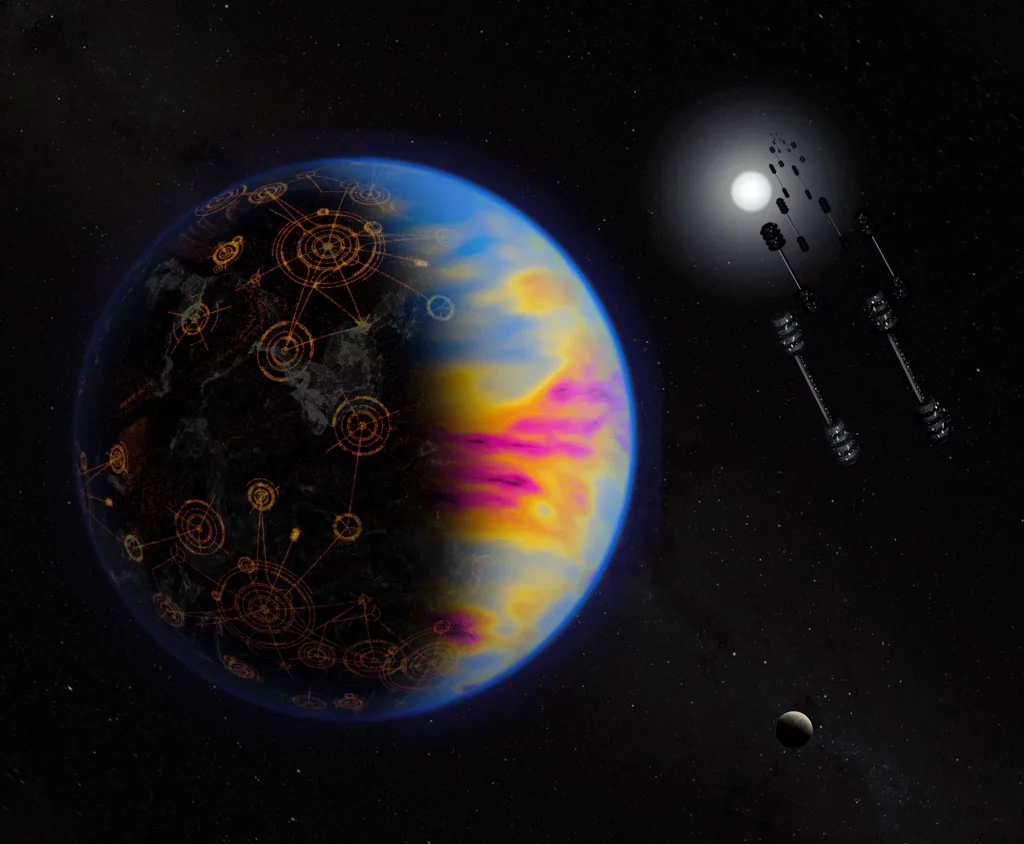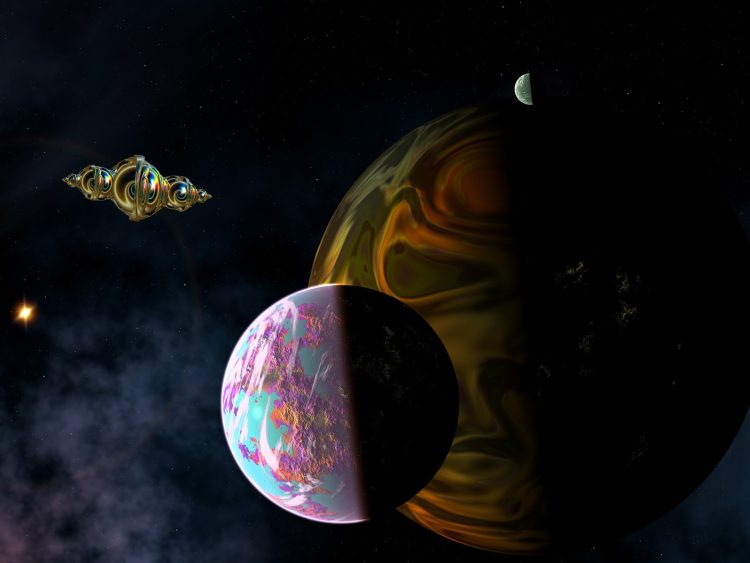In the ongoing quest to understand the cosmos and search for extraterrestrial intelligence, scientists face numerous challenges. One intriguing aspect of this search involves detecting technosignatures—indications of advanced technological civilizations beyond Earth. Recently, NASA scientists have shed light on why we might not easily spot technosignatures from solar panels, a seemingly straightforward technological indicator. This article explores the intricacies of technosignatures, the specific challenges related to solar panels, and the broader implications for the search for extraterrestrial intelligence (SETI).
1. The Concept of Technosignatures
Technosignatures are indicators of advanced technology or industrial activity from extraterrestrial civilizations. These signals or signs can vary widely, from radio signals and laser pulses to more subtle manifestations of technological processes.
1.1 Defining Technosignatures
Technosignatures are essentially any evidence that suggests the presence of intelligent technology. They differ from biosignatures, which are signs of biological life, such as chemical imbalances or atmospheric gases that might indicate the presence of life. Technosignatures are more directly associated with technological processes and artifacts.
1.2 Types of Technosignatures
Several types of technosignatures have been proposed and studied:
- Radio Signals: Strong, narrow-bandwidth radio signals that could indicate communication or broadcasting from an advanced civilization.
- Laser Pulses: High-energy laser pulses that might be used for interstellar communication or other technological purposes.
- Infrared Radiation: Heat emitted by advanced technologies, such as Dyson spheres or other energy-harvesting structures.
2. The Role of Solar Panels as Technosignatures
Solar panels are a common technology on Earth, converting sunlight into electrical energy. They are often considered as potential technosignatures in the search for extraterrestrial civilizations. The idea is that advanced civilizations might use solar panels or similar technologies to harness energy from their star systems.
2.1 Solar Panels as Energy Sources
Solar panels are an efficient way for civilizations to generate power. A technologically advanced society might deploy large arrays of solar panels or other energy-harvesting devices to meet their energy needs. These systems could produce detectable signals:
- Infrared Emissions: Solar panels and related technologies could emit infrared radiation as they convert solar energy into electricity.
- Reflection and Scattering: Solar panels might reflect or scatter light in ways that could be detectable by telescopes.
2.2 The Dyson Sphere Hypothesis
The concept of a Dyson sphere, a hypothetical structure that could encompass a star to capture its energy output, is closely related to the idea of detecting solar-panel-like technosignatures. A Dyson sphere or similar megastructure would generate substantial infrared radiation, potentially making it detectable across interstellar distances.
3. Challenges in Detecting Solar Panel Technosignatures
Despite the theoretical basis for detecting solar panel technosignatures, several challenges complicate this task:
3.1 The Limitations of Infrared Detection
One of the primary methods for detecting technosignatures is through infrared observation. Advanced civilizations using solar panels might produce detectable infrared emissions. However, several factors limit the effectiveness of this approach:
- Background Noise: The infrared sky is already filled with emissions from natural sources, including stars, galaxies, and cosmic dust. Distinguishing artificial signals from this background noise is challenging.
- Resolution Limits: Current telescopes have limited resolution, making it difficult to isolate and identify specific sources of infrared radiation.
3.2 The Variability of Solar Panels
Solar panels and similar technologies might not produce consistent or strong technosignatures:
- Small Scale: Individual solar panels are relatively small compared to the scale of celestial observations. Even large arrays may not emit signals that are strong enough to be detected across interstellar distances.
- Energy Efficiency: Advanced civilizations might use highly efficient technologies that minimize detectable emissions, making it harder to identify their presence.
3.3 The Focus on Other Technosignatures
The search for extraterrestrial intelligence often prioritizes other technosignatures that might be more prominent or easier to detect:
- Radio Signals: Radio telescopes are designed to detect narrow-bandwidth signals, which could be strong indicators of technological activity.
- Laser Pulses: High-energy laser pulses might be more noticeable against the cosmic background than infrared emissions from solar panels.

4. Technological and Methodological Advances
To overcome these challenges, scientists are continuously developing new technologies and methodologies for detecting technosignatures.
4.1 Improved Infrared Observatories
Advancements in infrared astronomy are enhancing our ability to detect faint signals:
- Space-Based Telescopes: Space telescopes like the James Webb Space Telescope (JWST) are equipped with advanced infrared sensors that can provide clearer and more detailed observations.
- Next-Generation Instruments: Future observatories and instruments are being designed to improve sensitivity and resolution, potentially making it easier to detect weak or distant technosignatures.
4.2 Advanced Data Analysis Techniques
New data analysis techniques are being employed to improve the detection of technosignatures:
- Machine Learning: Machine learning algorithms are used to analyze large datasets and identify patterns that might indicate artificial signals.
- Signal Processing: Advanced signal processing methods help distinguish potential technosignatures from background noise and natural phenomena.
4.3 Collaborative Efforts
Collaboration between different research teams and organizations enhances the search for technosignatures:
- International Partnerships: Collaborative projects between space agencies and research institutions increase the scope and effectiveness of technosignature searches.
- Citizen Science: Public involvement in data analysis can help process large volumes of information and identify potential signals.
5. The Broader Implications for SETI
The challenges in detecting solar panel technosignatures are part of a broader discussion about the search for extraterrestrial intelligence (SETI). Understanding these challenges helps refine our approach and set realistic expectations.
5.1 Expanding the Search
The search for extraterrestrial intelligence encompasses a wide range of potential signals and indicators:
- Diverse Approaches: Exploring different types of technosignatures and adopting various detection methods increases the likelihood of finding evidence of extraterrestrial civilizations.
- Interdisciplinary Research: Combining expertise from astronomy, physics, and engineering enhances our ability to detect and interpret potential technosignatures.
5.2 Philosophical and Scientific Implications
The search for technosignatures raises important philosophical and scientific questions:
- Existence of Extraterrestrial Life: Finding technosignatures would have profound implications for our understanding of life in the universe and our place within it.
- Technological Evolution: Studying technosignatures helps us understand the potential paths of technological evolution and the types of civilizations that might exist.
5.3 Future Prospects
The future of SETI and technosignature detection holds exciting possibilities:
- Enhanced Technologies: Ongoing advancements in technology will improve our ability to detect faint signals and analyze complex data.
- New Discoveries: As our observational capabilities and understanding of the universe evolve, new discoveries and insights into extraterrestrial civilizations are possible.
6. Conclusion
NASA scientists’ insights into the challenges of detecting solar panel technosignatures highlight the complexities of the search for extraterrestrial intelligence. While solar panels offer an intriguing possibility, several factors limit their detectability, including background noise, variability, and the focus on other technosignatures.
As technology advances and new methodologies are developed, our ability to detect and interpret technosignatures will continue to improve. The search for extraterrestrial intelligence remains one of the most profound and ambitious scientific endeavors, with the potential to answer fundamental questions about life in the universe. By understanding and addressing the challenges of technosignature detection, scientists and researchers are paving the way for future discoveries and deeper insights into the cosmos.


















































Discussion about this post